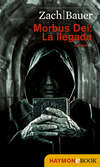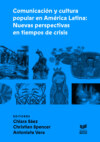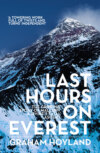Kitabı oku: «Yeti», sayfa 5
In an attempt to escape the dreadful cooking of the cook, Pong, the team ascend the mountain:
We were naturally all agog to catch sight of the Atrocious Snowman, about whom so much has been written. This creature was first seen by Thudd in 1928 near the summit of Raw Deedle. He describes it as a man-like creature about seven feet [tall] covered with blue fur and having three ears. It emitted a thin whistle and ran off with incredible rapidity. The next reported encounter took place during the 1931 Bavarian reconnaissance expedition to Hi Hurdle. On this occasion it was seen by three members at a height of 25,000 feet. Their impressions are largely contradictory, but all agree that the thing wore trousers. In 1933 Orgrind and Stretcher found footprints on a snow slope above the Trundling La, and the following year Moodles heard grunts at 30,000 feet. Nothing further was reported until 1946, when Brewbody was fortunate enough to see the creature at close quarters. It was, he said, completely bare of either fur or hair, and resembled a human being of normal stature. It wore a loincloth and was talking to itself in Rudistani with a strong Birmingham accent. When it caught sight of Brewbody it sprang to the top of a crag and disappeared.
The Rum Doodle team continue upwards, and the most desirous to see the Atrocious Snowman is the scientist Wish:
… who may have nourished secret dreams of adding Eoanthropus wishi to mankind’s family tree. Wish spent much time examining any mark which might prove to be a footprint; but although he heard grunts, whistles, sighs and gurgles, and even, on one occasion, muttering, he found no direct evidence. His enthusiasm weakened appreciably after he had spent a whole rest day tracking footprints for miles across a treacherous mountain-side, only to find that he was following a trail laid for him by a porter at Burley’s instigation.
This was a fairly accurate assessment of the evidence gathered so far for the Abominable Snowman/yeti.
In the end, surmounting a South Col (in Hunt’s book, not Mount Everest, 1938), our narrator finds that the members have climbed the wrong mountain, North Rum Doodle, only 35,000 feet, and the author Bowman finally parodies all those overblown descriptions of Mount Everest. ‘I looked up at the summit of Rum Doodle, so serene in its inviolate purity, and I had a fancy that the goddess of the mountain was looking down with scorn upon her slopes, daring them to do their utmost, daring the whole world …’
However, they soon see that their porters have climbed the correct mountain by mistake.
There is a last, serious, point to make about the prevailing English tight-lipped manner, so brilliantly captured later by the actor, John Cleese. It seems to contain a deeply suppressed rage at the universe which may have come partly from Victorian repression, partly from the horror of seeing your friends blown into bits in front of you during the war. Ways to feel better might be to conquer virgin mountains or capture mystery beasts; or, in Bowman’s case, just to rip the piss out of it all.

CHAPTER FOUR

Yeti prints on Everest … an English Ulysses … RAF Mosquito over Everest … climbing in women’s clothing … a sex diary … the Daily Mail Snowman Expedition … Casino Royale … a yeti scalp … a giant panda cub.
More yeti footprints appeared near Mount Everest in 1951, and this time they were properly photographed and created a sensation in the popular press. These ones were monstrous, with hideously misshapen toes. They were the Ur prints, the image which finally confirmed the Abominable Snowman in the public mind as a real, living monster. They shook the scientific establishment and kicked off a literary war between biographers. And they were presented to the public by Eric Shipton, whose name will therefore be associated forever with the yeti.
Of all our explorers, Shipton most closely approximates to the protagonist of Tennyson’s dramatic monologue ‘Ulysses’, from which poem he took an epigram for his Blank on the Map, and for the title of his second autobiography, That Untravelled World. The poem obviously meant something to him as an epic traveller. But Homer’s Ulysses was also a smooth talker and a trickster with an eye for the ladies.
As his biographer Jim Perrin explained,1 Shipton was an explorer-mystic who never really fitted into the Establishment way of thinking. In 1930, as a young planter in Kenya, he received a letter out of the blue from the fellow-colonialist Bill Tilman suggesting that they might try some climbing together. That letter sparked one of the most successful climbing and exploring partnerships in history. Later that year, they made the first ascent of the West Ridge of Mount Kenya, and for the rest of that decade they completed an unmatched series of climbs and explorations, from the penetration of the unvisited Nanda Devi Sanctuary and expeditions to Mount Everest in 1935 and 1938, to the first crossings of huge expanses of unexplored Himalayas. The whole decade was spent in their trademark lightweight unsupported Himalayan exploration, the full extent of which is still unacknowledged.
A strange connection between yetis and spying begins to emerge. During and after the Second World War, Shipton served as the British Consul-General in Kashgar, fighting a rearguard action against the foreign players in the last rounds of the Great Game. Every month he would write letters headed ‘Secret’ in which he detailed the latest activities of the main Russian and Chinese players of the game. In Persia during the war, he acted as a ‘double hatter’, ostensibly acting as an agricultural advisor but also reporting on political matters on the border between Persia and Iraq. Then in 1951, on a reconnaissance expedition to Mount Everest in just-opened Nepal, he and Ed Hillary spotted the eventual route to the top on the southern slopes of the mountain. It was on this trip that he discovered his evidence for the yeti.
Then disaster struck: not a climbing accident, which might have been expected, but something far more treacherous. He had been asked to lead the 1953 British Mount Everest expedition, and, having accepted, was then dumped by the Mount Everest committee, some of whom felt that he lacked the killer instinct and Establishment ties to fulfil the role. The less experienced Colonel John Hunt was appointed and the rest is history. Success and fame all round: except for Eric Shipton. ‘I leave London absolutely shattered,’ he wrote. Anyone who has been shafted by bureaucrats will sympathise. But there might have been another reason why the committee didn’t trust Shipton.
After this shameful episode, Eric Shipton’s marriage broke up, he lost his job as warden of an Outward Bound school and he then worked for a while as a forestry labourer. He became a sort of international tramp, but he did have a final decade of enjoyable and fruitful exploration in Patagonia. He ended his days leading easy treks in the Himalayas and lecturing on cruises. However, he will always be remembered as a kindly, wise and amused man who imbued confidence in his fellow climbers. Frank Smythe described a particularly trying day on Kamet: ‘We sank in knee deep, and I reflected grimly that we should have to retrace our steps up that slope towards the end of the day. But no one who climbs with Shipton can remain pessimistic, for he imparts an imperturbability into a day’s work which are themselves a guarantee of success.’2
There we have it, our thumbnail sketch of the man. But what did he discover about the yeti? When Nepal’s borders had finally opened after the Second World War, it was at last possible to explore the southern approaches of Mount Everest. In 1950, Bill Tilman had penetrated to the foot of the icefall in the Khumbu valley that was to prove the key to the summit. He thought the route would work but he felt that the risks were unacceptable. The route has since proved to be the main highway in the many successful climbs of the mountain, but the icefall has also seen the deaths of dozens of Sherpas and somewhat fewer Westerners. (I myself narrowly escaped disaster in the icefall on two occasions: once by avalanche and once by a collapse of ice seracs.) In the following year Eric Shipton, the second half of the Tilman–Shipton exploring partnership, lead the impressively titled Mount Everest Reconnaissance Expedition of 1951 to the same valley. Included in the party was Edmund Hillary, who was going to get to the summit two years later. They managed to climb the 2,000-foot icefall despite deep snow and saw a clear route to the top. Shipton saw that the mountain was climbable, given enough resources.
Some might have staged a shot at the summit from there (and changed history), but Shipton always seemed more interested in exploration than peak-bagging. He turned away from Everest, and in so doing probably gave ammunition to those who so humiliatingly sacked him from the leadership of the successful British expedition of 1953. This was unfair, as his expedition was far too late in the season to go high; it was 28 October and the winter cold had set in. (I was on the summit on 6 October and was lucky to get away with just frost-bitten fingers.) The reconnaissance expedition split into three parties, with Edmund Hillary exploring other possibilities behind the Shipton party. Then Shipton, Michael Ward and Shipton’s long-term Sherpa companion Sen Tensing found something else entirely:
It was on one of the glaciers of the Menlung basin, at a height of about 19,000 feet, that, late one afternoon, we came across those curious footprints in the snow, the report of which has caused a certain amount of public interest in Britain. We did not follow them further than was convenient, a mile or so, for we were carrying heavy loads at the time, and besides we had reached a particularly interesting stage in the exploration of the basin. I have in the past found many sets of these curious footprints and have tried to follow them, but have always lost them on the moraine or rocks at the side of the glacier. These particular ones seemed to be very fresh, probably not more than 24 hours old. When Murray and Bourdillon followed us a few days later the tracks had been almost obliterated by melting. Sen Tensing, who had no doubt whatever that the creatures (for there had been at least two) that had made the tracks were ‘Yetis’, or wild men, told me that two years before, he and a number of other Sherpas had seen one of them at a distance of about 25 yards at Thyangboche. He described it as half man and half beast, standing about five feet six inches, with a tall pointed head, its body covered with reddish brown hair, but with a hairless face … He left no doubt as to his sincerity.3
And then, writing in The Times:
The tracks were mostly distorted by melting into oval impressions, slightly longer and a good deal broader than those made by our mountain boots. But here and there, where the snow covering the ice was thin, we came upon a well-preserved impression of the creature’s foot. It showed three ‘toes’ and a broad ‘thumb’ to the side. What was particularly interesting was that where the tracks crossed a crevasse one could see quite clearly where the creature had jumped and used its toes to secure purchase on the snow on the other side. We followed the tracks for more than a mile down the glacier before we got on to moraine-covered ice.4
This little detail of the dug-in toes reminded me of the way I felt when I saw the way my yeti’s toes had dug into the snow.

Shipton’s ice axe and the footprint: true and false?
The photographs caused a sensation. Shipton’s extraordinary footprint led all who saw it to conclude that the creature that made it was an enormous snow-dwelling ape. On his return flight, Shipton was told by an air hostess at Karachi that journalists were waiting for him when they landed at London. He was mobbed at the airport on arrival and photographs of the footprint with an ice axe for scale, the footprint with a boot and another one featuring a trail of footprints made up the whole front page of The Times.
Scientists took the photographs seriously. John Napier was a British primatologist and paleoanthropologist who was widely considered as the leading authority on primate taxonomy. He was also the author of the first authoritative study of our subject: Bigfoot: The Yeti and Sasquatch in Myth and Reality.5 He explains in his book that it was Shipton’s photograph which really kicked off his own interest in the yeti. He thought that the previous eyewitness stories were merely travellers’ tales. ‘But with the publication of Shipton’s picture – sharp, undistorted and precisely exposed – the legend of the yeti took a giant step forward and entered the public domain.’
Scientific publications took it seriously, too. In the New Scientist, an editorial gasped: ‘The discovery would have profound scientific importance, as well as being a certain winner at the Zoo.’6 The Zoo?! Well, yes. Not to mention TV chat shows and a royal presentation. And, just by the way, overturning most theories of human evolution.
Shipton’s story was later corroborated by his companion Dr Michael Ward, who wrote: ‘This was no hoax and the events occurred exactly and precisely as described in Shipton’s book on the Everest reconnaissance and by myself in this article. There must, therefore, be some rational explanation.’
Dr Ward was one of the uncelebrated men behind the success of 1953. During his national service with the Royal Army Medical Corps, he had come across a roll of 35mm film shot by an RAF Mosquito fighter-bomber during an ‘accidental’ flight over Everest.7 He saw at once that there was a climbable route from the Western Cwm. He helped to persuade the Joint Himalayan Committee of the Alpine Club and the Royal Geographical Society to approve the Everest reconnaissance of 1951, and joined the successful British expedition of 1953 as doctor. James Morris gave us a thumbnail sketch of Ward at the top of the icefall: ‘He was a slender, lithesome man, and it always gave me great pleasure, even in those disagreeable circumstances, to watch him in action. His balance was so sure, and his movements so subtle, that when he turned his grinning and swarthy face upon you it was as if someone had drawn in a moustache upon a masterpiece by Praxiteles.’
Meanwhile, John Napier was making an exhaustive study of the yeti/Bigfoot phenomenon for his 1973 book on the subject, concentrating on the Shipton photograph, in particular. Napier was well qualified to pronounce on primate footprints, as before his career as a primatologist and paleoanthropologist he had worked as an orthopaedic surgeon and later became an expert on human and primate hands and feet. He was the founder of the Primate Society of Great Britain (they must have had great tea parties), and helped to name Homo habilis (‘handy man’) in the 1960s. Later, he became the Director of the Primate Biology Program at the Smithsonian Institution, where he examined the footage of an actual walking Bigfoot (the Patterson film, see Chapter Eight), and he also investigated the frozen Bigfoot specimen, the Minnesota Iceman.
Napier first of all takes us through the previous evidence for what we are calling the Western yeti and finds it unconvincing. Sherpas and mountaineers, he says, are seeing something, but what? ‘The behaviour and ecology of wild animals are only determined by long and arduous field studies followed by months of careful statistical analysis, and not by isolated encounters by untrained observers.’ By untrained observers I think he means us: the layman trekkers and climbers.
However, he allowed that mountaineers might add something to science. Napier notes that there are repeated accounts of yetis falling over while running down mountainsides because of the long hair over their eyes. This story comes up again and again, and the plant hunter Hooker first mentioned it in connection with his Sikkimese Lepcha porters. When traversing snowfields in bright sunlight, they combed their long black hair over their eyes to avoid snow blindness, not possessing glacier goggles. I have seen this myself in Tibet, and I suspect some of the stories of unexpected encounters with man-like beasts at night with long hair over their faces might just stem from unexpected meetings with other men with this particular hairstyle.
Napier examined Shipton’s photographs with great care and in the light of his particular expertise, human feet, which he states are the most specialised part of the body after the brain. He explains that modern humans walk in a unique way that distinguishes us from other primates. We walk with a stride, which begins with the desire to move forwards. The body sways forwards from the ankles until its centre of gravity moves in front of the feet and the body begins to fall forwards. At this point, we are about to fall flat on our faces. The reason that we don’t is because of a reflex action by the leg: it is swung forwards to intercept the fall and prop up the body. This continues in a succession of near-falls (rather like the progress of a bicycle, which is constantly steered to keep its centre of mass over the wheels). Disaster is never far away, as the observation of toddlers and drunks will confirm.
When a human foot hits the ground, it strikes heel first. For most individuals, the outside of the back of the heel touches first (as a quick look at your shoes will confirm), then as the stride progresses and the body catches up, the point of contact of the foot with the ground rolls along the shank to the ball of the foot behind the big toe, then the heel is lifted off the ground. The final push-off is performed by the big toe alone, which is why it is so much larger than the other toes. The foot is flexible, of course, which is one reason why, in soft sand and snow, you will see a narrow ridge of sand formed as the smaller toes curl up and depart.
In this context, then, a number of characteristics of the Shipton footprint seemed to bother Napier. He noted that the foot was not excessively long (13 inches), but extremely wide (8 inches across the forefoot). This was well outside the range of most known primate footprints. Then there appeared to be a presumptive or conjectured big toe in addition to what looked like a ‘normal’ big toe. This huge extra big toe was almost circular and had an odd V-shaped indentation behind it marked in the snow, which didn’t accord with any other known footprint. There were five toes in all. All known apes have the big toe much further back to allow for grasping, so whatever made the print was more human than gigantopithecus. Strangely, the imprint of the foot was convex in the region of the ball precisely where one would expect it to be concave, where the weight of the animal would have borne down in the snow. If this creature was walking like a human, it wasn’t leaving a print consistent with our style of locomotion.
Napier, seeking answers, then stresses that there was no certainty that the footprint as photographed was the same as the footprint when it was made. Melting or sublimation of the snow had probably enlarged the print in some unpredictable way. But still, two big toes seemed excessive. Also, what part of the foot had made the V-shaped indentation, and how could the snow be convex under the ball of the foot where it should be concave? Could it have been made by a human wearing some kind of moccasin with a V-shaped ruck in the leather of the sole?
He was deeply puzzled and was clearly flailing for an answer when he suggested that it might be double: two tracks superimposed. But a double what? He didn’t know.
Something must have made the Shipton footprint. Like Mount Everest, it is there and needs explaining. I only wish I could solve the puzzle; it would help me sleep better at night. Of course, it would settle a lot of problems if one could simply assume that the yeti is alive and walking about the Himalayas on gigantic feet with two big toes on each foot, and leave it at that. The trouble is that such an assumption conflicts totally with the principles of biology as we know them.8
It is painful watching this serious scientist floundering around for an answer when it should have been staring him in the face. Even when he gained access to the uncropped version of Shipton’s footprint and saw a second, different, part-footprint, the truth did not dawn on him. He concludes: ‘At first sight the Shipton print seems to offer unequivocal evidence for the reality of the Yeti; but perhaps it is too much to expect that the Himalayas would surrender one of its outstanding mysteries as easily as that … The Shipton print, at the moment of writing, is the one item in the whole improbable saga that sticks in my throat; without it I would have no hesitation in dismissing the Yeti as a red herring, or at least, as a red bear.’
After The Times headlines of 1951, some doubts were quietly raised among more sceptical yeti-hunters. A monstrous footprint, yes, but where was the foot? Careful readers noticed that Shipton’s account moved seamlessly from a first-person eyewitness statement to hearsay from a third party, Sen Tensing. Some remembered the teasing Times letters of the 1930s. Others were aware that there was a tradition of Everest expedition parties leaving practical jokes for the party following behind. For example, in Somervell’s diary for 1924: ‘March 31st … Down to a quaint and primitive Tibetan bungalow, where we left a whisky bottle filled with cold tea, with a note saying we had too much and this was left over. The second party completely fell, having not realised what it was April 1st … They dished it out all around before they discovered its true nature!’9
Shipton’s four photographs came up for sale at Christie’s auction house and so the public was able to study them more closely. Two of them featured the monstrous footprint, one with an ice axe for scale, and one with Michael Ward’s size eight-and-a-half climbing boot. Then there were two showing the line of tracks, one including Ward for scale, and one with a rucksack.

Snowy Prints
One problem is that the footprints in the wide-angle shots of lines of tracks do not match the single footprint in either size or shape. This is particularly evident in the ‘rucksack’ shot. This had also bothered John Napier, who had also seen the uncropped photographs.
When Napier quizzed him about the tracks eighteen years later,Ward then said that there were two sets of tracks, one from the yeti and one from maybe a goat. He said that the photograph including the rucksack was taken at a different time and wrongly put in a file with the ‘yeti footprint’ photos. Shipton corroborated this account, blaming a sub-editor at The Times for putting the ‘goat’ tracks in the same folder as the ‘yeti footprints’, or maybe they were filed together in the archives of the Mount Everest Foundation. Napier seized upon this explanation gratefully, even putting his conclusion in italics: ‘The truth of the matter, according to Michael Ward, and later confirmed by Eric Shipton, is that the trail has nothing whatever to do with the footprint.’
Unaccountably, though, Napier puts this particular photograph, which he now says has nothing to do with the yeti prints, on the cover of the Readers’ Union edition of his book.
What about the second photograph, featuring Michael Ward and another line of tracks? They don’t match the single footprint either. Napier doesn’t address this issue. There is a further problem: in the uncropped ice axe shot there is part of a second footprint but it doesn’t resemble the full footprint, as there is no sign of the second big toe. Did yetis have differently shaped feet? This second footprint appears to be another left foot. Did yetis therefore have two left feet, or was it hopping?
Now let us look at what Ward himself originally said:
In 1951 Sen Tensing, Shipton, and I descended from the Menlung La … at about 16,000–17,000 feet (Shipton said 19,000 feet) we came across a whole series of footprints in the snow, on the lower part of the glacier. There seemed to be two groups, one rather indistinct in outline leading on to the surrounding snowfields. The others were much more distinct with, in places, a markedly individual imprint etched in the 2 to 4-inch covering of snow. We had no means of measuring so after examining them Shipton took four photographs: two of the indistinct prints with myself, my footprints, and rucksack beside them for comparison; the other two photographs were of one of the most detailed and distinct group of prints, with my ice axe for scale, and a second one with my booted foot. The footprint was about the same length as my boot, and I take a size 42 continental, or 8½ British, which is about 12 to 13 inches long. The print was nearly twice as broad as my boot (3 to 4 inches) and had clear-cut edges in the crystalline snow on a base of firm snow ice. There was the definite imprint of a big toe that was broader and shorter than the other rather indistinct toes, of which there seemed to be four or five. We followed these tracks for some way down the easy glacier and noticed that whenever a narrow 6-inch-wide crevasse was crossed there seemed to be claw marks in the snow at the end of the toe imprints … Two days later we were joined by Murray and Bourdillon, who, after visiting the Nangpa La … had followed our route into the Menlung Basin. All tracks had been deformed by the sun and wind.10
So was there one set of tracks, or two? Edmund Hillary stated later that he was not aware of a second set of tracks. Bourdillon only mentioned one set of tracks when he followed a couple of days later. And claw-marks, made repeatedly? Why didn’t Shipton mention claws, and why were there no claw-marks in the monstrous single footprint photographs? Napier, clearly puzzled, wrote ‘there is only one footprint which disturbs me, and that is Shipton’s … this is my chief hang-up over the Yeti problem. It could be the one single piece of evidence that underwrites the existence of the Yeti, but I don’t think it is.’
Questions began to mount up. One possible answer, of course, was that Shipton’s footprint was … Shipton’s.
In 1989, the mountaineering journalist Peter Gillman published an article in the Sunday Times magazine about Eric Shipton’s footprint: ‘A Most Abominable Hoaxer’. It at last said what everyone had been thinking. In the Alpine Journal of 2001, he described how he and his collaborator Audrey Salkeld, the indefatigable mountain researcher and writer, pored over the photographs. They discussed the issue of the contradictory stories about the sets of tracks, and then:
We obtained the full version of the ‘ice-axe’ photograph – the version that is usually published has been cropped – and found that it contained the top half of a second footprint. Unlike the full footprint above it, it had only vague impressions of the smaller toes; and where you would expect a big toe to match the one in the main footprint, there was nothing at all. It was after pondering all the evasions and inconsistencies that we concluded that the most obvious explanation for the unique and anomalous single footprint was that it had been fabricated by Shipton. It would have been the work of moments to enhance one of the oval footprints by adding the ‘toe-prints’ by hand, particularly a hand wearing a woollen glove. The crisp indentations delineating the inner side of the print could have been made by Shipton’s ice axe. Hillary agreed with us, saying that he could quite imagine Shipton ‘tidying up’ the footprint in such a way.
In short, Gillman suggested that Shipton fabricated the footprint, which he photographed together with the ice axe and Ward’s boot; but unfortunately, the joke got out of hand. So, Gillman maintained, Shipton had to keep up the story, partly in retribution to the Everest Establishment that had so shamefully dumped him as leader of the 1953 expedition. In the article, he described Shipton as ‘mercurial and disrespectful of authority’ and ‘defiant, non-conformist, restless and embittered’ (compliments, I would have thought, apart from the last epithet). Gillman seems mildly shocked that Shipton should get up to such a prank, but perhaps he forgot the peculiar dynamic between his subject and his companions, Tilman and Sen Tenzing. These three men had kept this particular canard flying for decades.
Gillman’s article provoked fury in Peter Steele, who published a biography of Eric Shipton in 1998. In it, he wrote about the Gillman article: ‘It is difficult to take seriously, being full of scurrilous invective …’ and he objected to Gillman’s ‘churlish appraisal’ of Shipton’s character. This was unnecessarily personal but fairly typical of Shipton’s supporters, who always considered that he had a raw deal. Gillman put up a stout defence in an article in the Alpine Journal in which he also responded to Ward’s ‘The Yeti footprints – myth and reality’ in the AJ of 1999, in which he was again taken to task. In it, Gillman revealed that Ed Hillary was an early sceptic who quizzed Shipton about the photographs: ‘Eric,’ said Hillary, ‘tended to rather dodge giving too much of a reply.’
John Napier had clearly been bothered by the discrepancy between the big footprint and the two photographs of tracks, but throughout his book he had carefully dodged the first question that a scientist would be expected to ask: are these real?
Ücretsiz ön izlemeyi tamamladınız.












